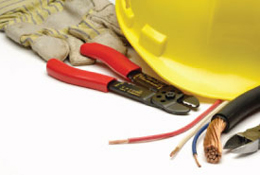EACH YEAR hundreds of thousands of consumers complain to their state attorneys general about home-repair rip-offs. The National Association of Consumer Agency Administrators, in fact, says home repairs are second only to car repairs on the nation’s pet-peeve list. To get the inside story on how tradesmen take advantage of their customers, SmartMoney interviewed dozens of general contractors, home inspectors and tradesmen themselves. We culled the results and assembled this section, which tells you what to watch out for when signing up for a repair.
Plumbers
You’ve heard the one about the plumber who thought twice about becoming a doctor because he’d have to take a pay cut. To aggravated homeowners, that’s no joke. The most frequently used parts in a plumber’s bag cost anywhere from a few cents (washers and O-rings) to a few dollars (faucet stems). It’s the house calls that empty your wallet. Plumbers usually charge a $50 to $75 “mobilization charge” per visit, which covers only the first hour of labor. You pay this fee even for a leaky toilet, often a 10-minute job.
Since most plumbers also fix disposals and do pool and sprinkler work, try to have them resolve several problems in a single trip. Unfortunately, plumbing jobs are tough to estimate. The way around that problem: Detail your problem over the phone, then ask how it will be fixed, how much it will cost and when work will start and finish. If you live in an affluent neighborhood, don’t give your phone number or address until you’ve been quoted a price. “In the years when I was a contractor, there were some neighborhoods where you immediately marked up the standard price by 50%,” says Bob Santucci, co-author of A Consumer’s Guide to Home Improvement, Renovation and Repair (Wiley, 1995).
For the same reason, seek “border bids” — quotes from tradesmen in not-so-affluent towns nearby. The going rate for plumbers in upscale Chappaqua, N.Y., is around $65 per hour, while in Yorktown, a working-class suburb nearby, it’s $50.
Two to four calls should provide a ballpark price for a repair job under $200. More expensive work requires an on-site estimate. Since 80% of your plumbing is hidden behind walls, chances are your plumber knows as little about what’s back there as you do. This is especially true of older homes. “I constantly start what I think will be a simple repair and I end up chasing it,” says Massachusetts handyman Mark Genovese. If a highly-recommended plumber has no hunch about a job’s cost, negotiate a flat rate for him to go in and find out.
When dealing with tradesmen who charge by the hour, check if travel time is on the clock. Alan Fields, co-author of Your New House (Windsor Peak Press, 1995), forgot to ask this question when he hired a plumber to replace a leaky faucet. The plumber charged him for a half-hour trip each way and ran the meter when he drove to the supply store for a missing part. “It was a $100 mistake,” Fields gripes.
Plumbers, like electricians, are more heavily regulated than other tradesmen and more accountable for shoddy work. But some routinely cut corners to boost their own margins. They use 1/2-inch pipe instead of 3/4-inch pipe — which means that in bathrooms where there’s a shower, your toilet may not flush on the first try. They use L or K grade copper piping, which wears in five to 10 years, instead of M, which lasts 15 to 20. Some plumbers use plastic pipe, which is less expensive but noisier and less durable than metal. Ask your plumber what he’s using before he starts work.
If you suspect that your plumber is overcharging for materials — passing along a $50 toilet for $400 — try comparing prices at your local Home Depot or plumbing-supply house. The latter may not sell directly to consumers, but you can still read the price tags.
Painters
The biggest painting rip-offs aren’t in the final coats, but in the prep work. On a three-story house, most people don’t bother climbing up a ladder to make sure every inch has been properly scraped, sanded, patched and primed. But a spot-check makes sense, since poor preparation can lead to water damage and rot. To verify that priming has been done, ask your painter to use a different color, such as light-gray primer on a white paint job.
How much will you have to pay? A detailed on-site estimate helps avoid unpleasant surprises for both parties. The old saw says get three estimates and take the middle. Forget it. As long as the tradesmen are bidding on the same job — strip the wallpaper, plaster the walls, apply one coat of primer and two coats of Benjamin Moore Regal Satin in Linen White — you can get as few as two estimates, provided they’re in the same ballpark.
Don’t scrimp on quality paint, even if you can afford only a single coat. You get the most wear for the money buying one step down from the top of the line. Also keep in mind that painters often do better on paint prices than do consumers. One painter in Katonah, N.Y., buys paint at $22 a gallon, then charges clients $25. At retail, it would cost $28. Make sure to ask your painter how his paint pricing works.
When evaluating exterior painters, ask for addresses of homes they painted five years ago — and then go look. A good paint job should last about seven years. At five years, you should see just the beginning of wear around the eaves and gutters.
One final thing to keep in mind: No matter how much you nag potential contractors to lower their prices, they will need to make money on your job. There is such a thing as pushing them too hard. Explains one painter who figures in a 20% to 25% profit margin: “With insurance and expenses, each man costs me $150 a day. If I can’t make a profit on that, I can always get cheaper men.” And cheaper men means shoddier work.
Electricians
Because electricians have the most explicit national standards, they register the fewest complaints from consumers. Before hiring an electrician, though, make sure he’s a member of the National Electrical Contractors Association or a local electricians’ union. You should also check — as with all tradesmen — that he’s insured and uniformed (he should be), driving a truck or van with a painted-on logo (magnetic signs indicate fly-by-night operations) and willing to write you an estimate on his own printed invoice (which should reveal a street address rather than just a post office box).
Electricians’ estimates vary widely, as with all repairs involving more labor than materials. A heating contractor can only price a furnace as low as he can buy it wholesale. But an electrician or a plumber can bill whatever he likes. Just ask the transient plumbers from Maine and Vermont now working in Fairfield County, Conn. They’re charging $14 an hour, nearly double their normal rates, but a far cry from the $55 to $60 local residents generally pay for a house call. (If you’re looking for itinerant tradesmen, check the local Pennysaver and grocery store bulletin boards. You might even drive by new housing developments, since builders usually get their hooks into any cheap available talent.)
Though it’s rarer, electricians can rip you off on parts, too. A cheap electrical switch costs your electrician 29 cents, compared to $2 for a longer-lasting one. When buying such devices from your electrician, make sure he’s providing “specification grade or better” products, a standard set by the National Electrical Manufacturers Association. Cheaper grades like “utility” and the unfortunately named “residential” won’t last in a high-use area like your kitchen, where you’re plugging and unplugging the can opener several times a day.
Your best weapon against shoddy electrical work is a $10 voltage tester purchased at a hardware store. This basic diagnostic tool will tell you if outlets are wired incorrectly, one of the biggest problems with electrical work.
Roofers
State attorneys general have files stuffed with stories of roofers who have skipped town with a client’s shingles — and his check. Some roofers don’t even bother using shingles, claiming that a coat of latex paint prevents leaks just as effectively.
If you’ve got a leaky roof, the likely cause is flashing, which is the material — usually copper, galvanized steel or aluminum — that joins your roof to the chimney and vents. Flashing can be fixed cheaply with a black gooey substance called asphalt cement (which lasts around three years) or with new flashing (which lasts more than a decade). Plan on paying $30 to $50 an hour to have flashing fixed correctly.
Beware the roofer who gazes up at your house and announces, “Your roof is 15 years old. It will leak soon unless you replace the shingles.” The only way to determine if you need a new roof is by walking around on it. Worn-out shingles, which have lost their oil and thus their water repellency, look brittle, curl up at the edges and often crumble into powder when broken.
A new asphalt shingle roof (with one layer of shingles) costs $30 to $50 per “square” (a roofer’s square is 100 square feet), depending on the quality of the shingles and the slope of your roof, and lasts 15 to 20 years. A second layer will last about 10 years. If you plan to move within that time, adding a second coat without stripping the first will save you around 20% in labor (as well as $500 to $700 for a dumpster to haul away the old shingles).
HVAC Specialists
According to a recent survey by Checkbook Inc., a Washington, D.C., consumer group, the biggest heating and air conditioning rip-offs include substituting used parts for new ones and replacing parts that don’t need fixing. Always ask to see the decrepit or broken parts before they’re replaced, and to see the packaging and documentation for new parts before they’re installed. And make sure your heating, ventilation and cooling contractor doesn’t fix what isn’t broken. If your forced-air furnace breaks down, your technician may suggest installing a $100 automatic gas valve when all that’s needed is a $4 thermo coupler (which detects heat coming from the pilot light). If you’re suspicious, ask to have the thermo coupler replaced first, then see if your furnace works. It’ll take less than 10 minutes.
If possible, have heating and air conditioning repairs done in the off-season. Checkbook estimates that air conditioning work is up to 10% cheaper in November than in July. Also, stay away from extended payment plans, if you can help it, says Alex Walter, who runs his own HVAC firm in Aurora, Colo. “When people are offered these ‘free’ extended payment plans for a year, they really are paying for it, somewhere in the order of $100,” says Walter.
Since heating and air conditioning systems require regularly scheduled maintenance, many consumers buy service contracts. Make sure your service provider has the most up-to-date equipment, like a refrigerant-recovery machine and a refrigerant leak-detection device.
When replacing an air conditioner or furnace, quickly eliminate bids from any contractor who estimates the job off-the-cuff — without measuring your windows, asking what type of insulation you have and looking at the direction your home faces — and plugging this information into a form (or computer program) called Manual J. This calculates the heat loss and gain of your house and ensures that you won’t buy too powerful or weak a system.
Should You Hire a Contractor?
Our experts were mixed on the merits of contracts. While a written agreement may help keep a tradesman to his word, a piece of paper doesn’t necessarily protect you from getting ripped off. If you’re duped by a licensed contractor, you can complain directly to the local or state licensing board and request an arbitration or hearing. If found liable, the contractor can be ordered to make good, or his license can be revoked. If you’re dealing with an unlicensed tradesman, contact your regional Better Business Bureau for low-cost arbitration. If all else fails you can sue, although unless the contract is substantial — our experts suggest $7,500 or more — you’ll probably want to represent yourself in small-claims court rather than hire a lawyer.
Whether or not you get a contract, make sure that upon completion of the work you get a written statement that the tab has been paid in full and that the tradesman won’t put a lien on your house. Occasionally repairmen will go home, decide they deserve more money, and then send another bill. If you don’t pay it, they can spend $25 to file a lien, which makes it impossible for you to sell or refinance your property.










